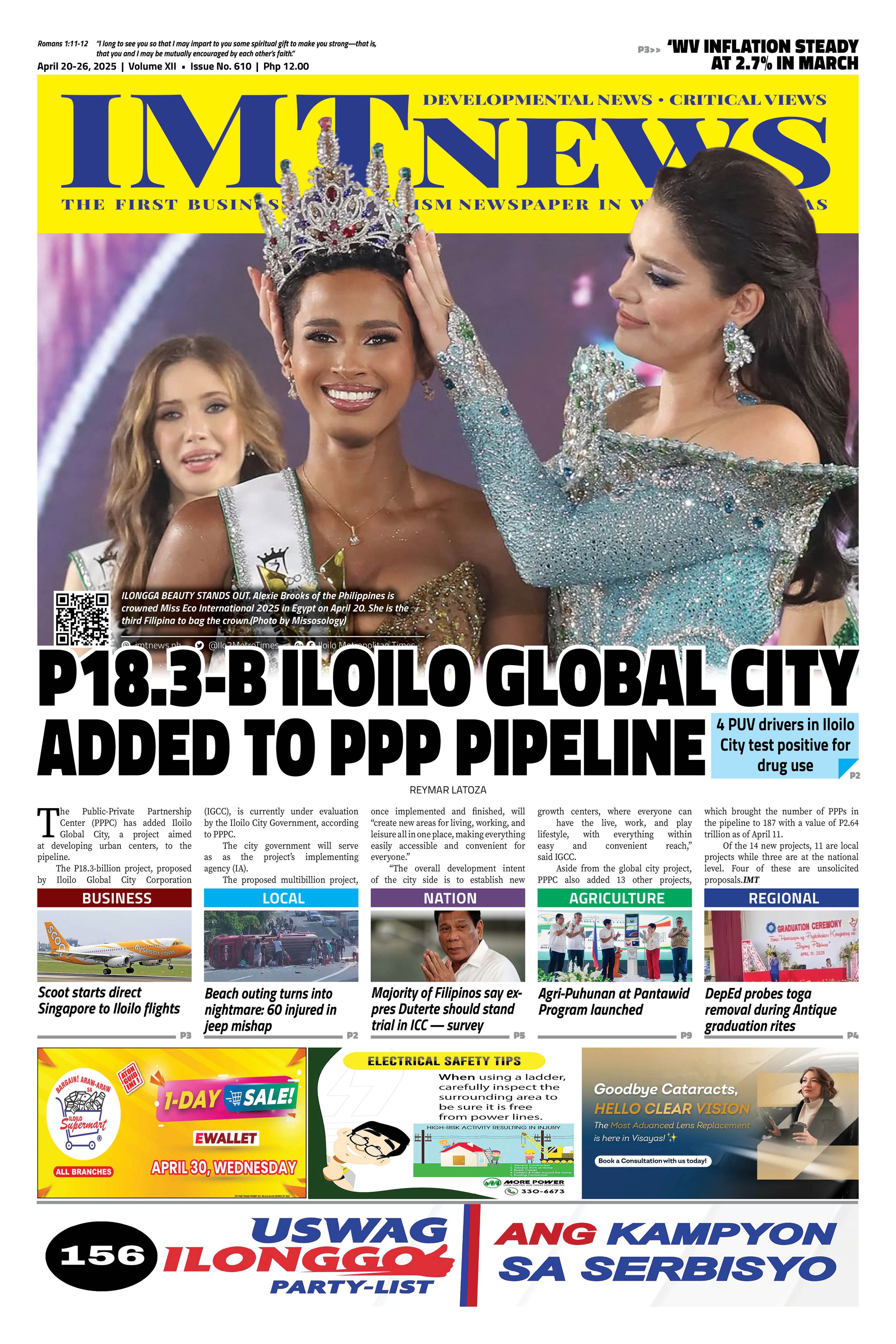Iloilo City is again bracing for the Dinagyang Festival. This year 2020 ia already the 52nd edition of this festival. The organizers are excited with the enhancements that they have introduced in the programming. Expectations are high considering the slogan Level-Up Iloilo.
The Dinagyang, however, is not all good news. The bad (sad) news is on its aftermath with the tons of waste that it generates annually. I’m hoping that we are not in for some levelling-up as far as waste and garbage is concerned.
The opening salvo last January 10 offered an image regarding our “waste expectation” on the road to the highlight. But Iloilo City Mayor Jerry P. Treñas have appealed that the festivity be free from trash by sending a message to the public not to throw trash anywhere in order to ensure an orderly and clean festival.
It is a noteworthy reminder from the mayor, but how the aim of a trash-free festival will be attained is a different story altogether. I underscored this concern during the launching of the Iloilo Festivals Foundation, Inc. (IFFI) by asking its president Atty. Joebert Peñaflorida during the media open forum what is their plan regarding waste management and the lack of sanitary facilities. The response was, they have a plan, and a committee will manage it.
In the previous years, Iloilo City General Services Office mobilizes more than 200 workers to maintain cleanliness, ensure proper sanitation, and sweep the streets of the city proper during and after Dinagyang. It has estimated around 1,000 metric tons of garbage at 300 metric tons per day from performance centers, parade route, and food festival areas.
If the festival program have levelled-up to international standards, did the waste and sanitation management program have also followed the legal standards befitting international applause? Let’s cross our fingers tightly, but it appears to be lacking. Perhaps, next year will be better.
First, a trash-free Dinagyang is good, but it doesn’t mean that the city is compliant to RA 9003. It is the law that mandates Local Government Units to enforce waste segregation at source.
This is self-explanatory. It simply means that putting a garbage disposal bin on every inch of the street of Iloilo City during the Dinagyang Festival is an applaudable method. While it may ensure that the streets will be clean and orderly, the law mandates that it must be segregated. By segregated, it would logically follow that collection of different types of garbage is also segregated or a segregated collection.
What is the use of having a segregated waste at source when the contracted garbage collector like a J.S Layson hauls everything using a compactor truck – compressing a mixed of waste from food, recyclables, and residuals.
Hence, the city government needs to come up with a mechanism on how that requirement of the law will be attained even during festivals. One of the key step is to ensure that RA 9003 is implemented at the barangay or grassroots level. The law mandates LGUs to establish a Material Recovery Facility which will act as a transfer or sorting station before the different types of waste are collected and brought to its destination, like a composting facility or recycling facility.
Collecting a combined waste, compacting the waste material, and ceremoniously throwing everything at the Calajunan Mountain violates RA 9003 and it is not consistent with Level-Up Iloilo.
Second, popular message and public declaration of a trash-free Dinagyang is also commendable, but it must be operationalized. How? By integrating it in the entire programming of the festival.
Imagine, for instance, how much tons of waste will be diverted from being collected by a compactor truck when it is segregated at source – at the kiosks and food stalls and other facilities.
Food kiosks after all processes a permit and they pay a rental fee; waste segregation must be included in the contract. The City Government can exercise its police powers by way of regulation. It can mobilize a team of Eco-Warriors who will act as a inspectors during the festival to ensure that the provisions of the contract is observed. Enforcement includes penalties.
Third, a trash-free Dinagyang needs to be campaigned too. We do not just invite guests to attend Dinagyang, be merry, and leave their wastes indiscriminately. It needs to be communicated through a campaign which highlights waste prevention and reduction as an aim of the festival.
A campaign needs to have the legislative and finance support because it will require not only an IEC material, but infrastructure, facility and human resource. You don’t put up a campaign billboard or distribute flyers without an actual garbage bins on the area or without an enforcers, right?
Putting the LGU aside, the Dinagyang Festival serves two purposes: 1.) as a Roman Catholic religious event, and 2.) as a business and profit venture by the private sector.
These are two major sectors of society who are heavily benefiting from the annual fiesta. Isn’t it proper that they apply self-regulation, mobilize resources, and exercise conscience to ensure a trash-free Dinagyang? Why would the environment suffer from your profiteering?


![[OPINION] The 8th Safest City: Artificial or Real?](https://www.imtnews.ph/wp-content/themes/Extra/images/post-format-thumb-text.svg)
![[OPINION] Making it a Big Deal](https://i0.wp.com/www.imtnews.ph/wp-content/uploads/2019/10/MTU3MDU4ODkwNzI3Mw.jpg?resize=440%2C264&ssl=1)


